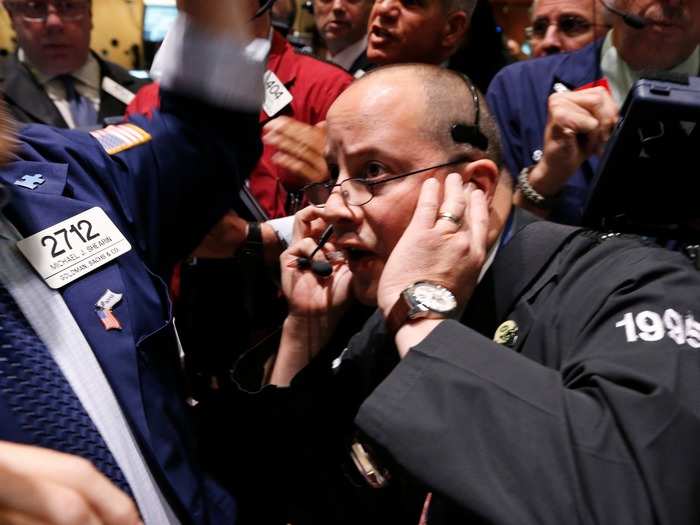- Home
- stock market
- HOWARD MARKS: These 16 pieces of time-honored investment wisdom have problems
HOWARD MARKS: These 16 pieces of time-honored investment wisdom have problems
The earning of a profit proves the investor made a good decision.

Correct forecasts lead to investment gains.

The Problem: Correct forecasts often come from trends, which is probably discounted in the price.
"The easiest way to have a correct forecast is to extrapolate a trend and see it continue as expected. Most forecasters do a lot of extrapolating, meaning their forecasts are usually broadly shared. Thus when the trend does continue, everyone’s right. But since everyone held the same view, the continuing trend was probably discounted in advance in the price of the asset, and the fact that it rolls on as expected doesn’t necessarily produce profit. For a forecast to be highly profitable, it has to be idiosyncratic. But, given how often trends continue, idiosyncratic forecasts aren’t often right."
A low price makes for an attractive investment.

The Problem: There's a difference between cheapness and value.
"I talked about the importance of price in determining whether an investment is risky. But you’ll see low price isn't the essential element. An asset may have a low absolute dollar price, a low price compared to the past, or a low p/e ratio, but usually the price has to be low relative to the asset’s intrinsic value for the investment to be attractive and for the risk to be low. It’s easy for investors to get into trouble if they fail to understand the difference between cheapness and value."
Contrarianism will bring consistent success.

The Problem: Doing the opposite of what the crowd does isn’t a sure thing either.
"It’s true that the investing herd is often wrong. In particular, it behaves more aggressively the more prices rise, and more cautiously the more they fall – the opposite of what should happen. But doing the opposite of what the crowd does isn’t a sure thing either. Much of the time there isn’t anything dramatic to either do or avoid. Contrarianism is most effective at the extremes, and then only for those who understand what the herd is doing and why it’s wrong. And they still have to summon the nerve to do the opposite."
Assets with greater liquidity are safer.

The Problem: Liquidity can dry up, and it tells you little about the long run.
"Greater liquidity generally means you can get out of an asset easier and closer to the price of the last trade. But first, liquidity can dry up when other investors change their mind about the asset. And second, the theoretical ability to get out when you want says nothing about fundamental safety and relatively little about investment safety in the long run. It’s much safer to be in well-analyzed assets with good fundamentals and attractive prices, in which case you can hold for a long time without needing to exit. The best defense against a lack of liquidity is arranging your affairs so there’s little need for it."
Risky investments produce high returns.

The Problem: It assumes there’s no such thing as investment skill and value-adding decision making.
"This is one of the greatest of the old saws, and one of the wrongest.
-
A collection of low-risk investments can produce a high return if the low-risk character of the components permits them to perform dependably and keeps there from being any big losers to pull down the overall result. An absence of losses can give you a great start toward a good outcome. This is the cornerstone of Oaktree’s investment philosophy.
-
On the other hand, high-risk investments can’t be counted on for high returns. If they could, they wouldn’t be high-risk. High-risk investments can fail to provide the high returns they seemed to promise if the analysis underlying them proves to have been ill- founded or if they run into negative developments.
The presumed positive relationship between risk and return is predicated on the assumption that there’s no such thing as investment skill and value-adding decision making. If markets are efficient and there’s no skill, it’s reasonable to believe that higher returns can be attained only through the bearing of increased risk. But if outstanding skill is present, there’s no reason to think it can’t be used to create portfolios with low risk and high return potential."
Adding risky assets to a portfolio makes it riskier.

The Problem: Adding a risky asset can actually make your portfolio safer.
"One of Nobel prize-winner William Sharpe’s greatest contributions to investment theory came in the realization that if a portfolio holds only low-risk assets, the addition of a risky asset can make it safer. This happens because doing so increases the portfolio’s diversification and reduces the correlation among its components, reducing its vulnerability to a single negative development."
It’s important to do what feels right.

The Problem: Most great investments begin in discomfort.
"The best investors know intellectually what the right thing to do is. But while this knowledge gives them comfort, they have to tamp down their feelings in order to follow it. The best ideas are ones others haven’t tumbled to, and as I wrote in 'Dare to Be Great,' 'Non-consensus ideas have to be lonely. By definition, non-consensus ideas that are popular, widely held or intuitively obvious are an oxymoron ... Most great investments begin in discomfort.' Good investors are subjected to the same misleading influences and emotions as everyone else. They’re just more capable of keeping them under control."
Assets that are appreciating deserve your attention.

The Problem: The higher the price (everything else being equal), the less attractive an asset is.
"Most people impute intelligence to the market, and thus they think rising prices signal fundamental merit. They may be attracted to 'momentum investing,' which is based on the belief that something that has been appreciating is likely to continue doing so. But the truth is, the higher the price (everything else being equal), the less attractive an asset is. Momentum investing works until it stops, at which time the things that have been doing worst – and may be most undervalued – take over market leadership."
The market is “efficient,” meaning asset prices reflect all available information and thus provide accurate estimates of intrinsic value.

The Problem: Emotion rules in place of reason.
"The efficient market hypothesis assumes people are rational and objective. But since emotion so often rules in place of reason, the market doesn’t necessarily reflect what’s true, but rather what investors think is true. Thus prices can range all over the place. Sometimes they’re fair, but sometimes they’re way too high or low. It’s a big mistake to impute rationality to the market and believe its message."
A forecast has to be correct in order to be profitable.

The Problem: A forecast only has to be less wrong than others to be profitable.
"Just as correct forecasts aren’t necessarily profitable, profitable forecasts don’t have to be correct. A forecast – even if it’s not correct – can be profitable if it’s merely less wrong than others. If a trend that everyone else extrapolates turns out not to continue, a prediction of the deviation can be very profitable . . . even if it’s not exactly on target."
Because people are risk-averse, risky deals are discouraged and the market awards appropriate risk premiums as compensation for incremental risk.

The Problem: Risk-averseness fluctuates.
"The truth is that investors’ risk-averseness fluctuates between too much and too little. When it’s the latter, skepticism and conservatism dry up, due diligence is inadequate, risky deals are easy to pull off, and compensation for risk bearing usually turns out to be insufficient. Investors absolutely cannot depend on the market to discipline itself."
Sometimes the outlook is clear, and sometimes it’s complicated and unpredictable. You have to be careful when it’s the latter

The Problem: The future is never worry-free.
"The truth is, the future is never worry-free. Sometimes it seems to be, because no risks are apparent. But the skies are never as clear as they seem at their clearest. Which is more treacherous: when everyone understands that the future presents risks, or when they believe it to be knowable and benign? As I mentioned earlier, I worry about the latter much more than the former."
Understanding the science of economics will enable you to safely harness the macro future.

The Problem: Human nature.
"There are no immutable rules in play. 'In economics and investments, because of the key role played by human nature, you just can’t say for sure that ‘if A, then B,’ as you can in real science. The weakness of the connection between cause and effect makes outcomes uncertain. In other words, it introduces risk.' (“Risk Revisited,” September 2014)"
It’s desirable that everything in a well-diversified portfolio performs well.

The Problem: If everything performs well, everything could also perform poorly.
"The truth is, if all the holdings were to perform well in one scenario, they could all perform poorly in another. That means the benefits of diversification wouldn’t be enjoyed. It shouldn’t be surprising – or totally disappointing – to have some laggards in a portfolio that’s truly well-diversified."
The level of risk in a portfolio can be kept low by applying a simple formulaic process.

The Problem: Risk is complicated, and reducing risk often means reducing potential gains.
"Rather, risk comes in many forms and they can be overlapping, contrasting and hard to manage. For example, as I said in 'Risk Revisited,' efforts to reduce the risk of losing money invariably increase the risk of missing out on gains, and efforts to reduce fundamental risk by buying higher- quality assets often increase valuation risk, given that higher-quality assets often sell at elevated valuation metrics."
Popular Right Now
Advertisement